|
The final rounds of 1979 Queensland Racing Car Series took place at Surfers Paradise International Raceway. This event was part
of the track's Speedweek which included motorcycle and drag racing.
Cars in the state championship were classified as Racing Cars, Sports Racing Cars, Production Sports Cars, Sports Sedans or
Production Touring. These groups were broken down further by engine displacement which resulted in 22-classes.
|

|
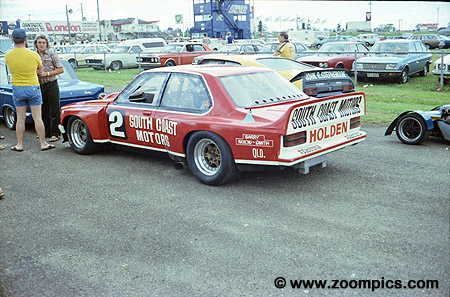
|
This is a Holden Torana with a 5.7-litre engine. It is classified as a Sports Sedan and displays little resemblance to the road going version.
This car was driven by Geoff Russell with support from South Coast Motors.
|
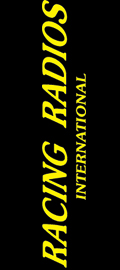
|
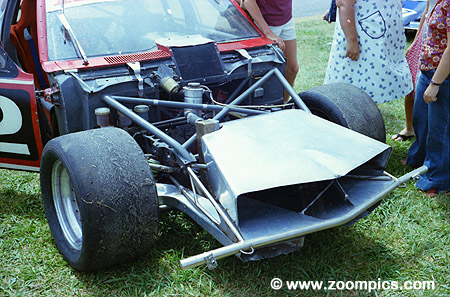
|
This is another view of the South Coast Motors Holden Torana. The rules for Sports Sedans were
very liberal. Note - the front of engine aligns with the firewall placing the 5.7-litre V8 next to the
driver. I am not sure if these Australians are brave or crazy.
|

|
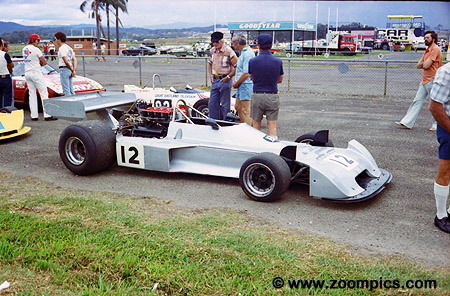
|
The great thing about attending an amateur race event is you never know what interesting piece of
machinery is going to show up. This is the only version of a Formula 5000 Chevron B37 and was driven by Ivan Tighe.
This car was originally built for Count Rudy Van der Straten and driven by Peter Gethin in the 1976
Sports Car Club of America's Formula 5000 series.
|

|
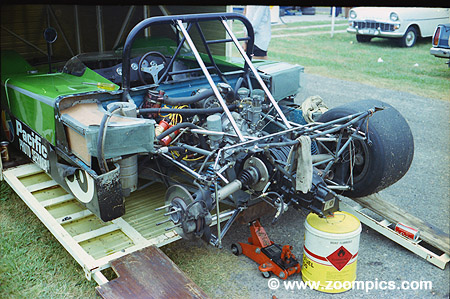
|
The global proximity of Australia to major automotive manufacturers in Europe and North America has
resulted in GM Australia (Holden) and Ford Australia producing unique models. This is also the case
in the production of Sports Racers and Formula cars. One of these successful Australian companies is Elfin. The car
pictured is an Elfin 360 powered by a Mazda rotary and driven by Kerry Horgan.
|

|
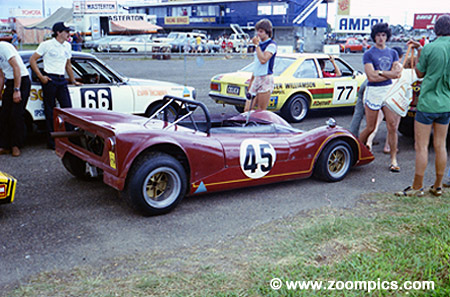
|
The Elfin company was founded by Garrie Cooper in 1957. He died in 1982 but the company continued and
still manufacture cars today under new ownership. This is an Elfin 300C driven by Trevor Bassett.
There were six 300s produced between 1967 and 1969.
|

|
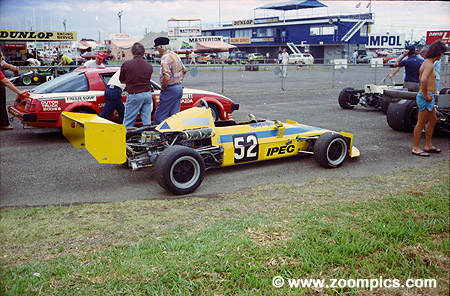
|
Elfin also produced a large number of Formula cars - Formula Ford, Formula 5000, Formula Junior, Formula Vee, and
Australian Formula 2 and Formula 3. Rick Tobin drove this Eflin in the Australian Formula 2 class.
|

|
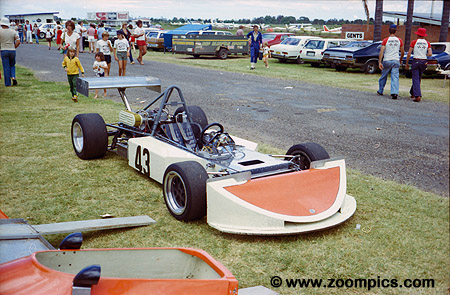
|
This is another Australian Formula 2 Elfin. This 700 series model was driven by Noel Orphan. Orphan won the 1979
Queensland State Racing Series for Australian Formula 2 cars.
|

|
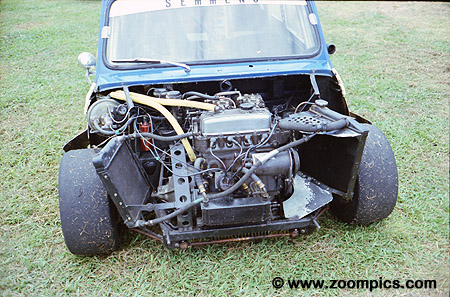
|
This shot is for those who are very familiar with the Mini Cooper. You should immediately recognize
the addition of the second radiator on driver's right. The British designed the Mini to run in an
English climate which is quite a contrast to tropical environment of Queensland, Australia.
|

|
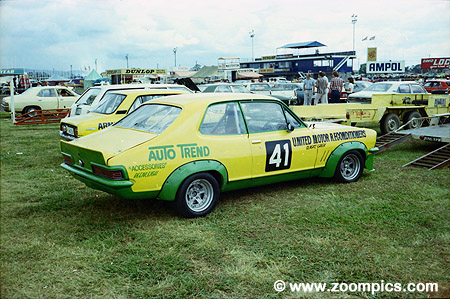
|
Auto Trend Access Beenleigh entered this Holden Torana LC for Bary LaBudda. The LC Torana
GTR XU-1 was equipped with a 3-litre six-cylinder engine producing a 160-horsepower. The car was
also fitted with three Zenith Stromberg CD-150 carburetors and a performance cylinder head and camshaft.
This version of the Torona was equipped with a rear spoiler, wider steel wheels and front disc brakes were standard.
|

|
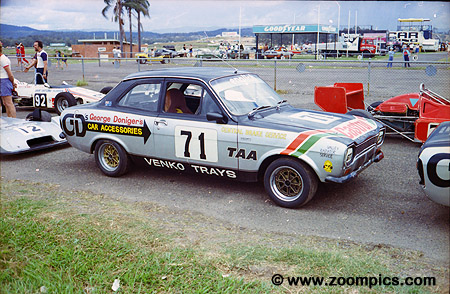
|
The Ford Escort T/C was a popular choice for drivers competing in the Touring category. Equipped with a 1.6-litre twin-cam
engine this car competed in the under 2-litre class. The car was entered by George Donigers Car Accessories for driver
John English.
|

|
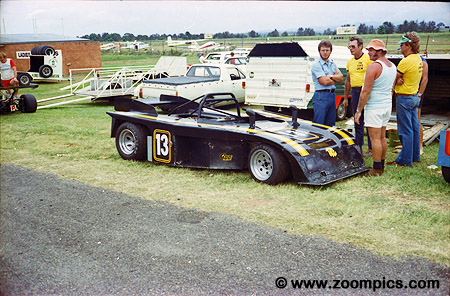
|
The TRE (Tulip Racing Enterprises) MK1 was a creation of Kees Koppenol. This Australian built car was sold to Dale Johnstone
and powered by a 1.6-litre DOHC Ford engine. This car competed in the Sports Car class.
|

|
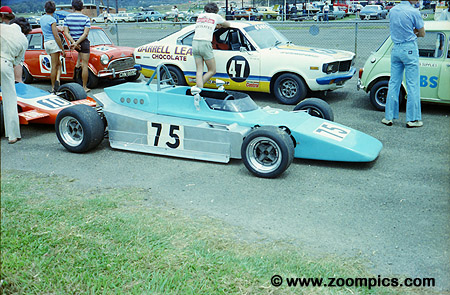
|
Australian Formula 2 is one of Australia's oldest racing classes dating back to 1964. The current format was introduced in 1978.
Brian Shead of Cheetah Racing Cars and Garrie Cooper of Elfin Racing Cars were largely responsible for the development of the series format
which was devised to suit the budgets of Australian teams. This is a Van Dieman driven by Ross Holden.
|

|
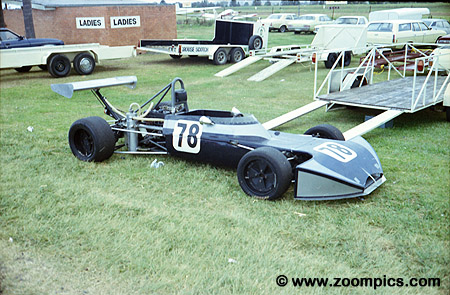
|
This is another Australian produced formula car. Robert Duncan drove this Renmax BN2 in the Australian
Formula 2 class. Renmax was founded by Bob Britton and he produced Sports Racers and Formula cars between 1962
and 1978. Built in 1968, there was only one Renmax BN2 and it was based on a Brabham BT-14.
|

|
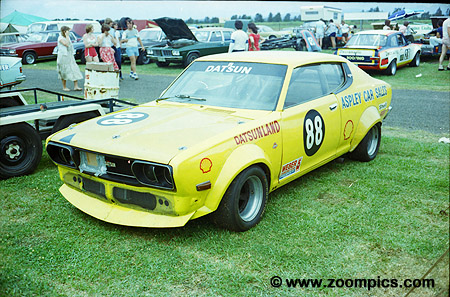
|
This very competitive Datsun 180B was entered by Aspley Car Sales for Brian Power. This was the SSS
version which had several features that differentiated it from a regular 180B. Perhaps, the most important
were twin Hitachi carburetors and higher compression ratio. This model was called a Datsun 610 in North America.
|
|
Copyright Notice:
|
All content (photographs and text) appearing on this website are the exclusive property of © www.zoompics.com and are protected under International copyright laws. The subject matter on this website may not be reproduced, copied, stored or manipulated.
|
© Copyright 1999, 2000, 2001, 2002, 2003, 2004, 2005, 2006, 2007, 2008, 2009, 2010, 2011, 2012, 2013, 2014, 2015, 2016 and 2017




